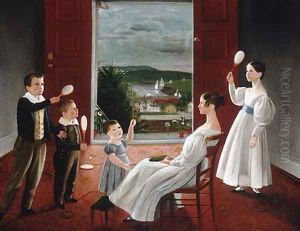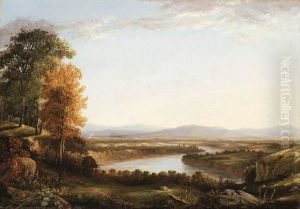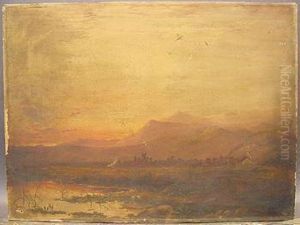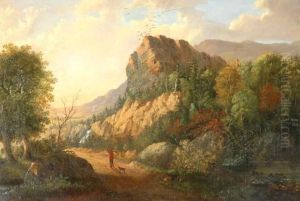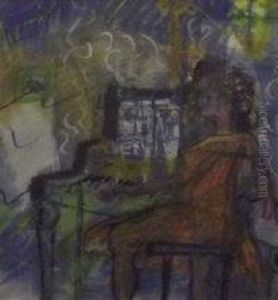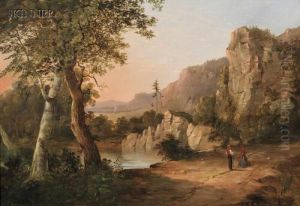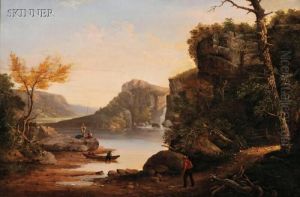Ambrose Andrews Paintings
Ambrose Andrews was a British artist known for his work as a portrait and landscape painter. Born in 1805 in England, he lived during the 19th century, a period that saw significant changes in art with the transition from neoclassicism to romanticism and the emergence of Victorian-era sensibilities.
Andrews was active during a time when the British art scene was dominated by figures like J.M.W. Turner and John Constable, yet he managed to carve out a niche for himself with his unique style and subject matter. Although not as widely recognized as some of his contemporaries, Andrews contributed to the Victorian art world with his detailed portraits and serene landscapes.
He received his art education in London, where the Royal Academy of Arts was a pivotal institution for training artists. Andrews's work reflected the Victorian taste for realism and attention to detail. His portraits often captured the nuances of character and social status of his subjects, which was a popular trend of the time as the middle class was rising and there was an increasing demand for portraiture.
His landscapes, on the other hand, tended to reflect the tranquility and beauty of the English countryside, resonating with the romantic idealization of nature. These works were imbued with a sense of calm and order, qualities that were highly appreciated by Victorian society.
Ambrose Andrews's career was relatively short-lived, as he passed away in 1859. Despite his death at a relatively young age, his legacy lived on through his paintings, which continued to be appreciated by collectors and art lovers.
It is important to note that while Ambrose Andrews is not one of the most prominent figures in art history, and detailed biographical information about him is limited, his contributions to British art during the 19th century were part of the larger tapestry of Victorian artistic endeavors. His works today can be found in art collections and are studied by those interested in the period's portraiture and landscape painting.
